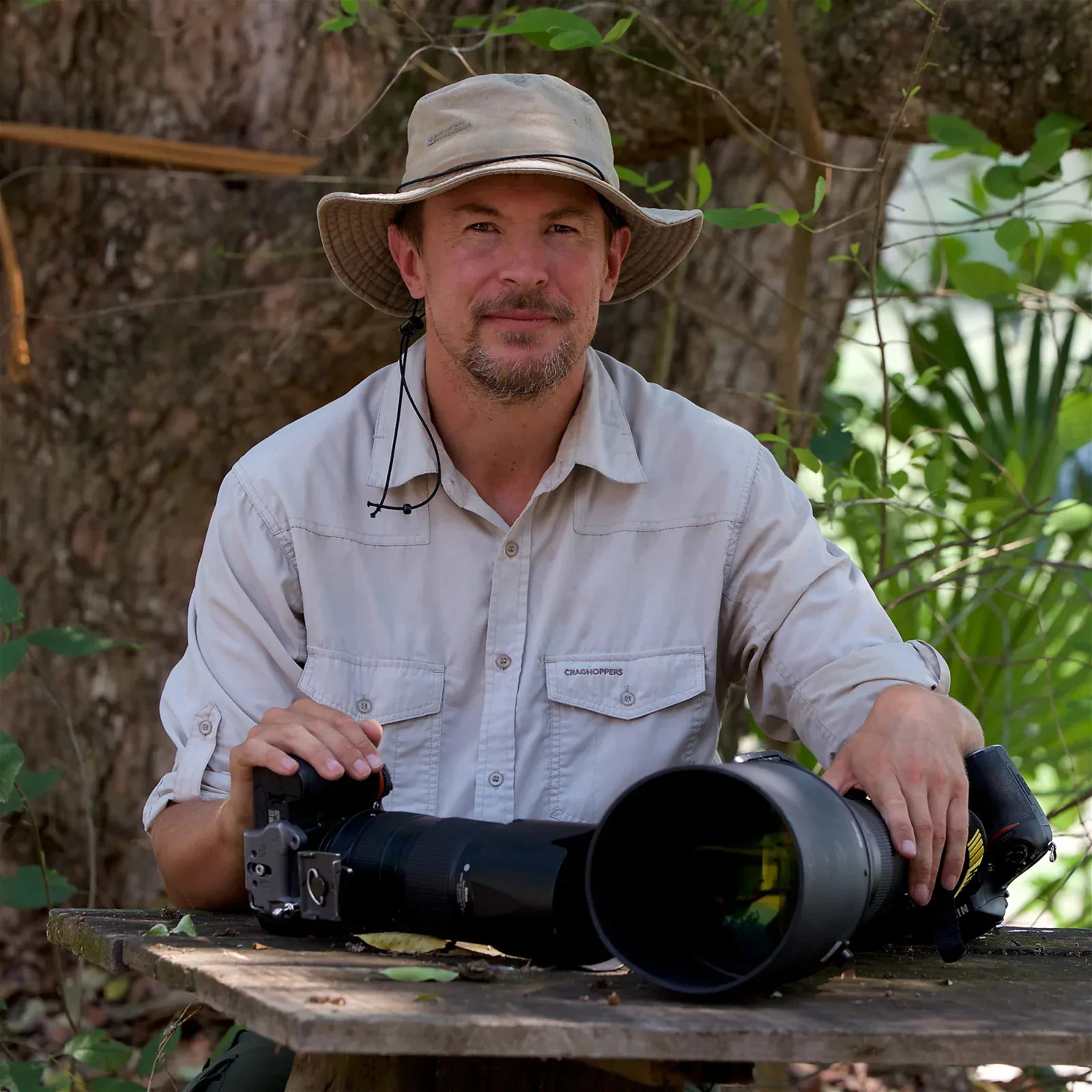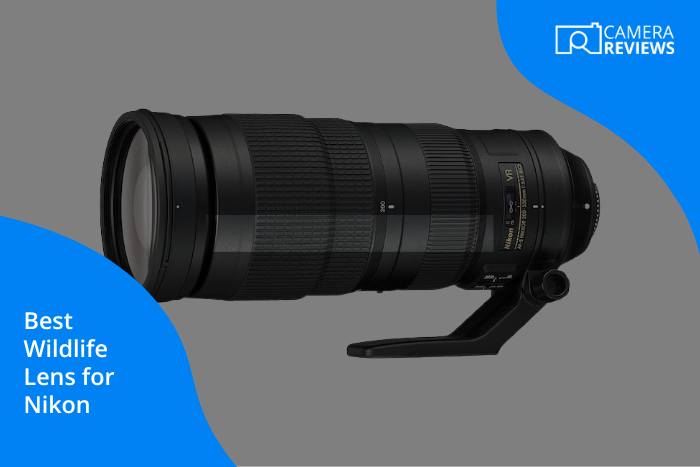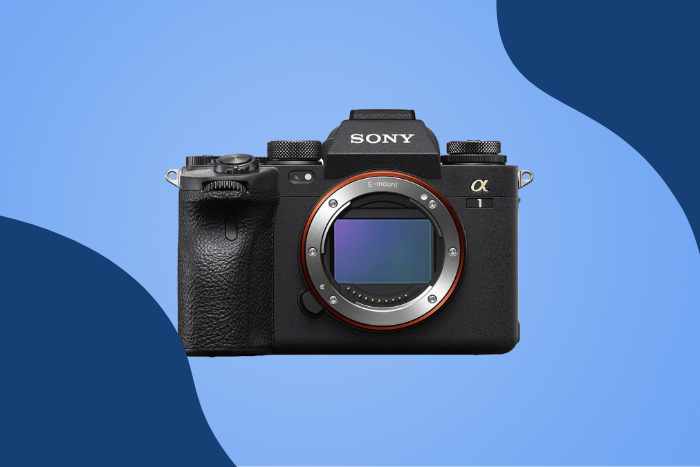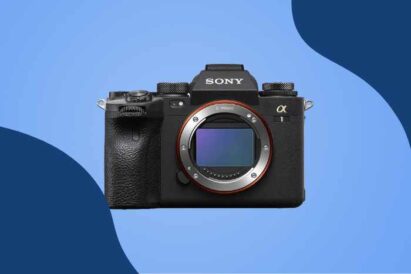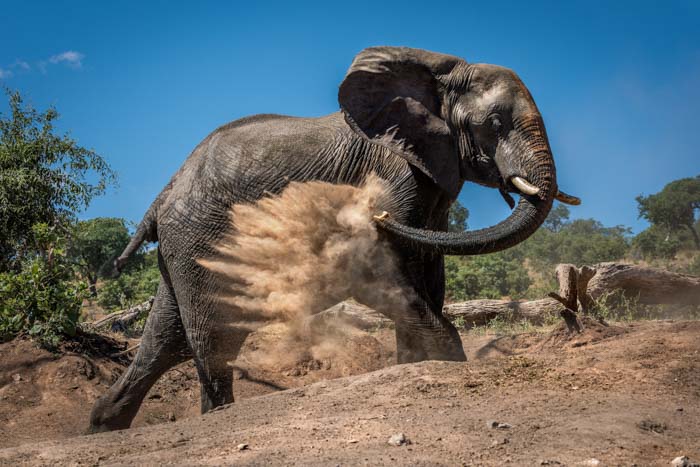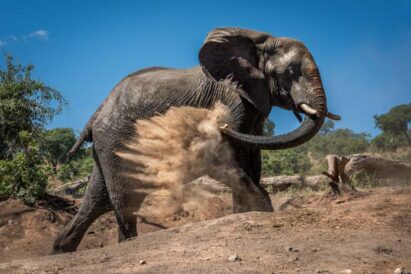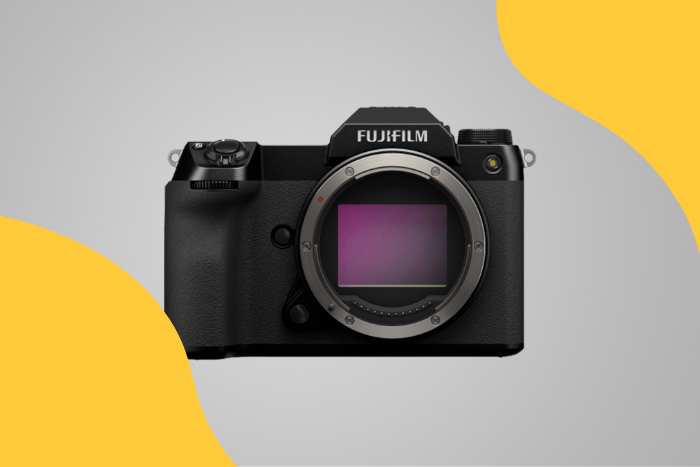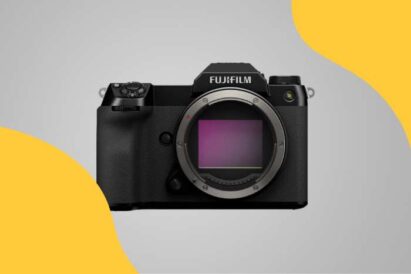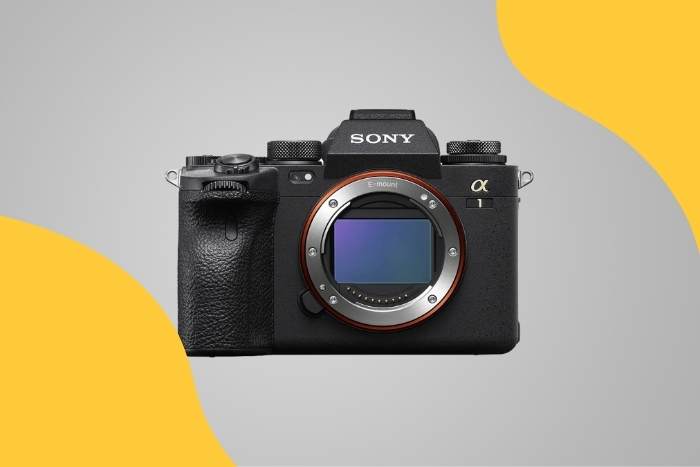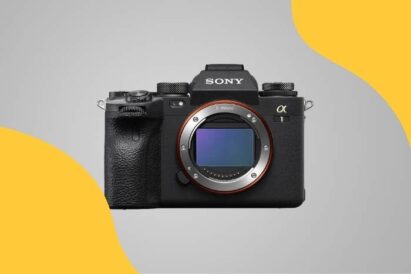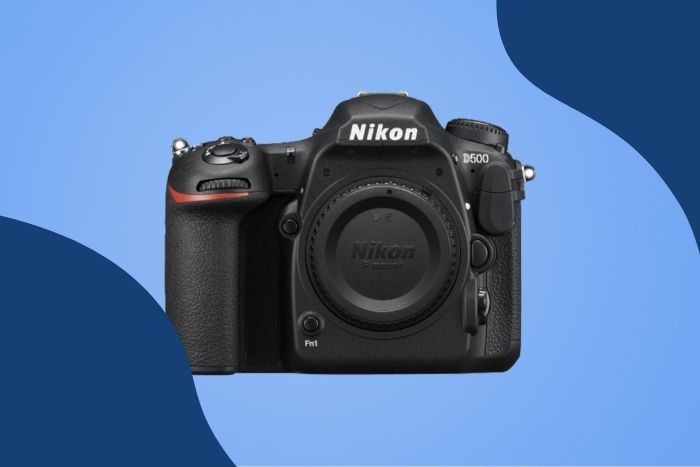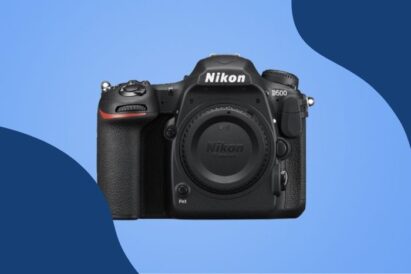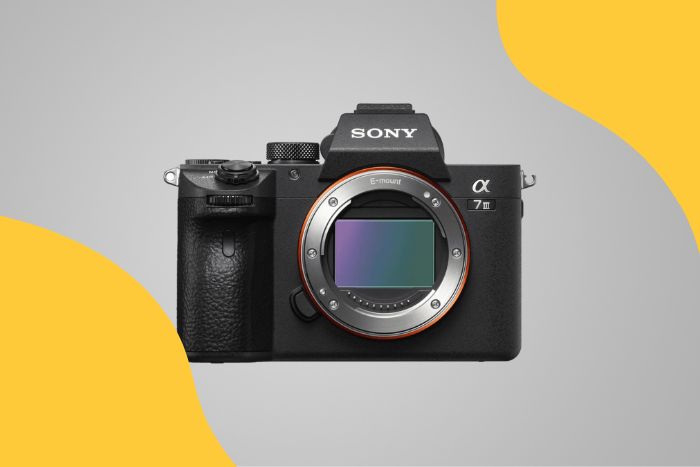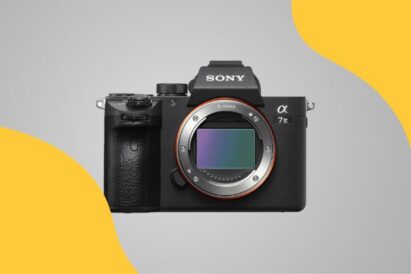The best Nikon lens for wildlife photography will differ for mirrorless and DSLR owners. Mirrorless lenses are smaller and lighter, which is helpful for handheld shooting. But Nikon’s Phase Fresnel (PF) lenses are lighter than most DSLR lenses. They also combat chromatic aberration—if you don’t mind a narrower maximum aperture.
Wildlife photography generally demands long focal lengths. This means the most exciting new Nikon lenses are the telephotos with built-in teleconverters. These are the Nikon Z 400mm f/2.8 TC VR S and the Nikon Z 600mm f/4 TC VR S. They offer some of the flexibility of zooms but also fantastic reach and wide apertures.
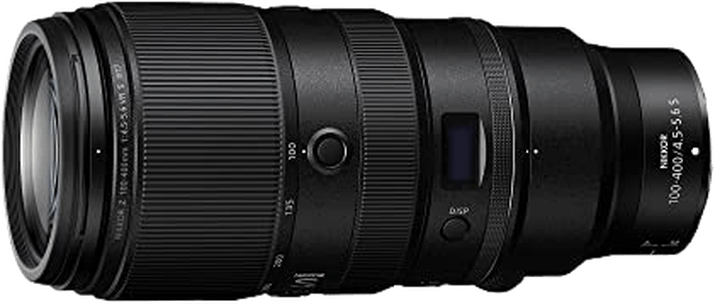
Nikon NIKKOR Z 100-400mm F/4.5-5.6 VR S
Best Nikon Lenses For Wildlife Photos
The most important features of any lens are the focal length, the Vibration Reduction (VR) system, and the maximum aperture.
“Fast” long primes are expensive. So we’ve also included cheaper lenses and zooms for the beginner or budget photographer.
Here’s a list of the best Nikon lenses for wildlife photography. We’ve split it into mirrorless lenses and DSLR lenses.
And we also broke them down into three skill levels. You’ll also find a budget option. in almost every category, except for mirrorless pro lenses!
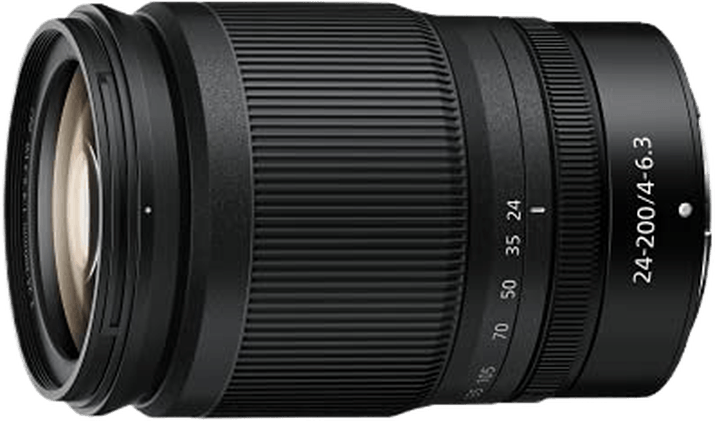
- 4.5-stop Vibration Reduction (VR)
- Fluorine coat repels dust and dirt
- Weather sealing
- Light and compact
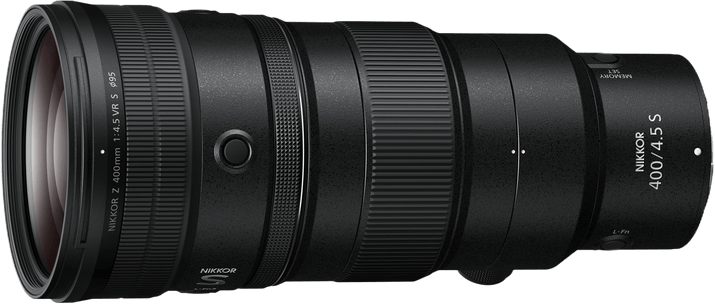
- Superb optics
- Great autofocus
- 5-stop Vibration Reduction (VR)
- Handles well

- Great image quality
- Rapid autofocus
- 5.5-stop Vibration Reduction (VR)
- Handy zoom range
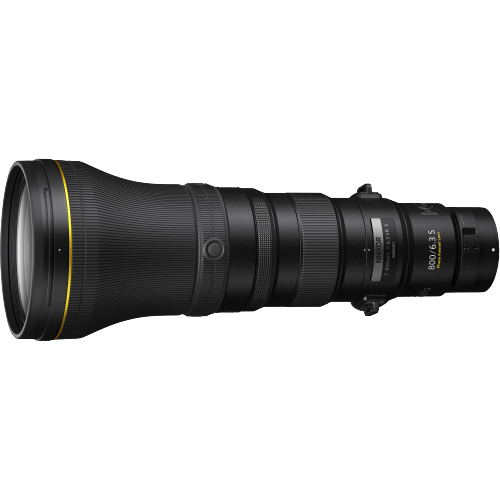
- Superb optics
- Rapid autofocus
- 5-stop Vibration Reduction (VR)
- Lightweight Phase Fresnel (PF) design
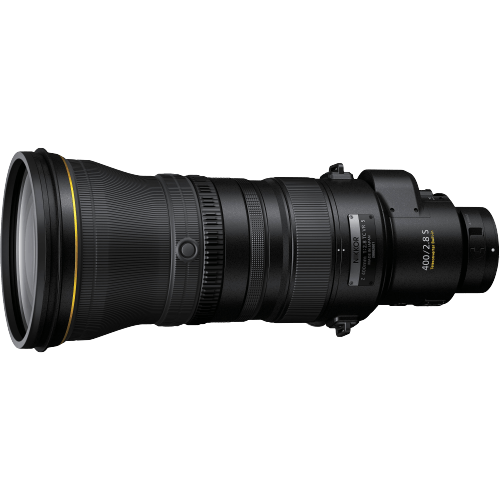
- Excellent optics
- Fast aperture
- Built-in 1.4x teleconverter (TC)
- 5.5-stop Vibration Reduction (VR)
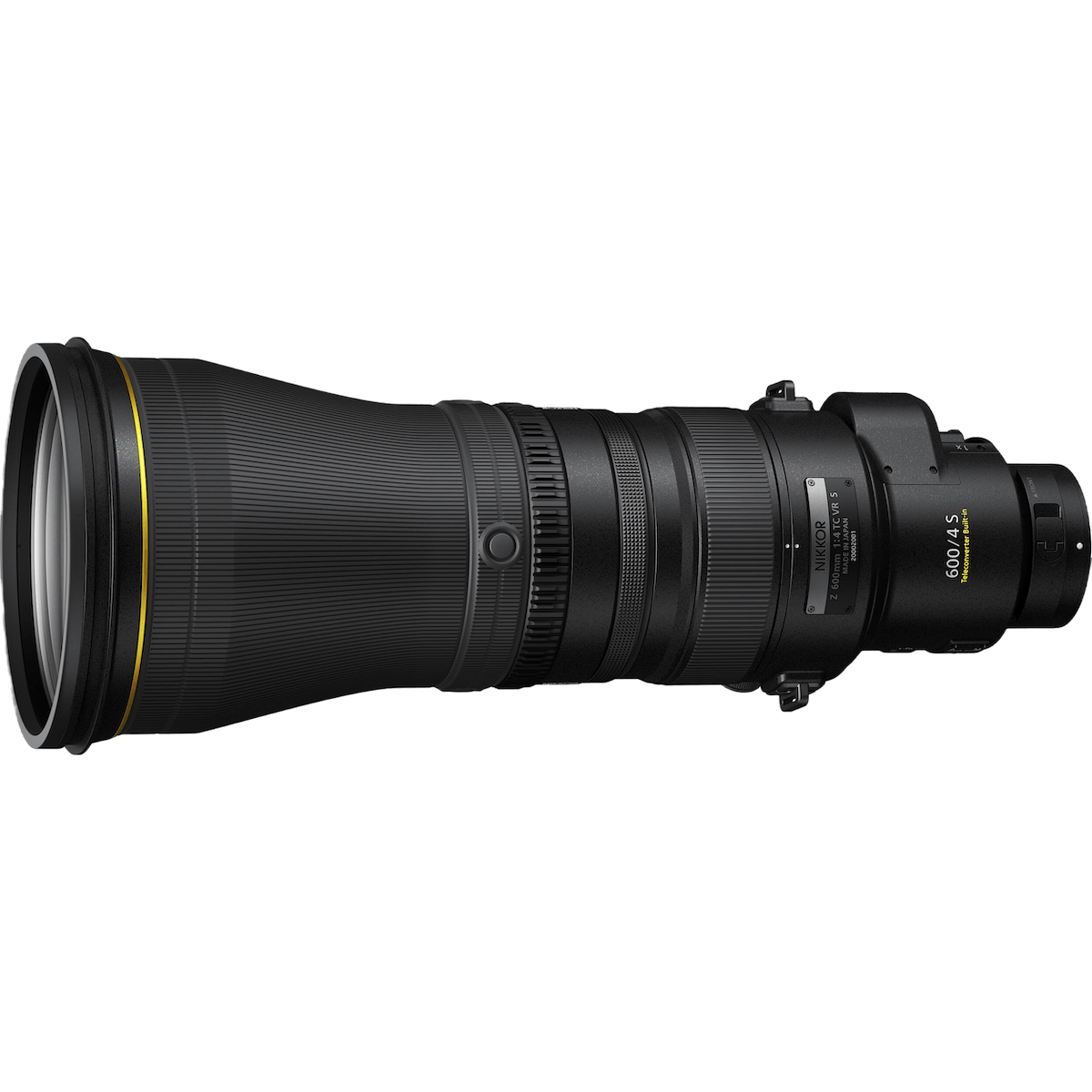
- Fast aperture
- Great reach
- Built-in 1.4x teleconverter (TC)
- Good handling
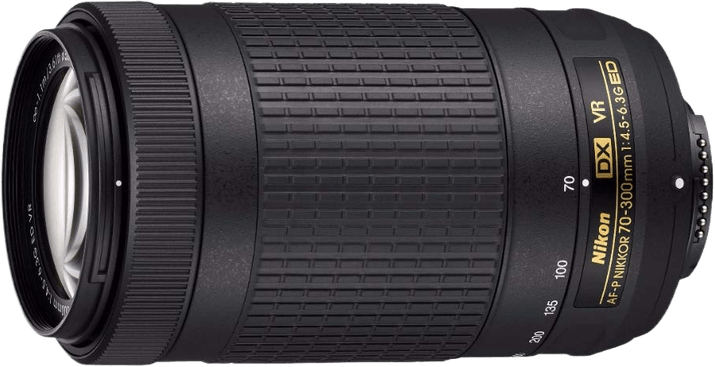
- Quiet, fast AF system
- 4.5-stop Vibration Reduction (VR)
- Weather sealing
- Compact and lightweight
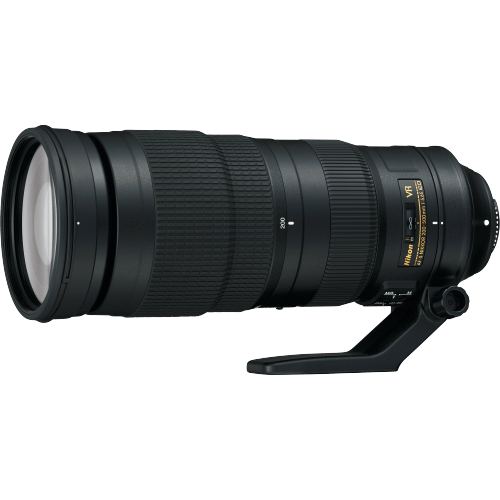
- Excellent optics
- 4.5-stop Vibration Reduction (VR)
- Useful zoom range
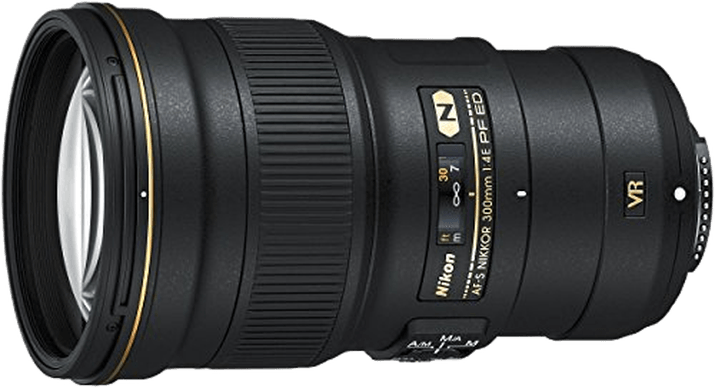
- Silent Wave AF motor
- 4.5-stop Vibration Reduction (VR)
- World's lightest 300mm FX lens
- Affordable
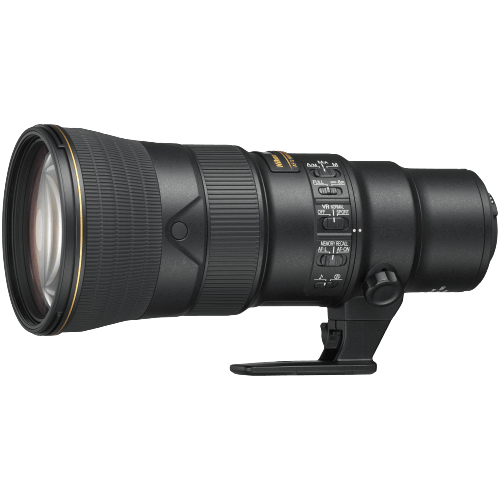
- Good optics
- Compact and lightweight
- Affordable
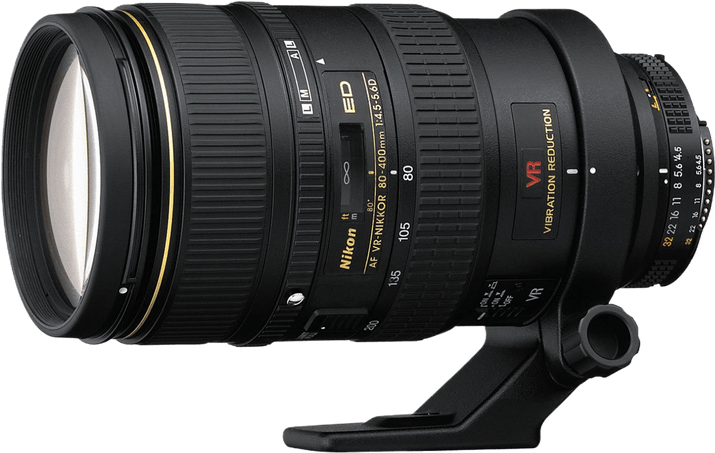
- High-performance
- 4-stop Vibration Reduction (VR)
- Good build quality
- Compact and lightweight
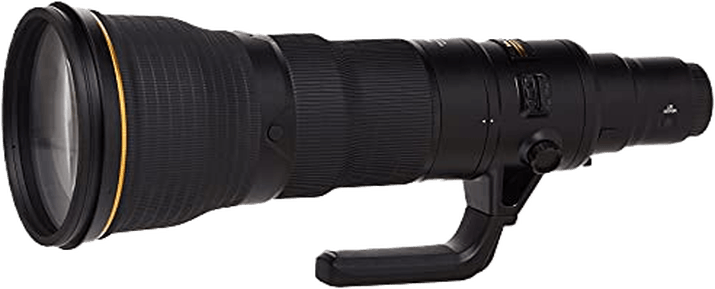
- Exceptionally sharp
- 4-stop Vibration Reduction (VR)
- 1.25x teleconverter (TC) pushes focal length to 1000mm
- Longest NIKKOR AF lens
Best Nikon Mirrorless Lenses for Wildlife
Nikon’s mirrorless range is not yet as wide as its DSLR range. But it’s growing all the time.
All the lenses use the Z-mount and are designed for Nikon’s Z series of mirrorless cameras. These include the Z6 II, Z7 II, and Z9.
1. Nikon Z 24-200mm f/4-6.3 VR

| Brand |
Brand
Nikon
|
| Maximum Aperture |
Maximum Aperture
f/ 4-6.3
|
| Focal Length Range |
Focal Length Range
24-200 mm
|
- 4.5-stop Vibration Reduction (VR)
- Fluorine coat repels dust and dirt
- Weather sealing
- Light and compact
- No focus distance scale
- Narrow maximum aperture at full zoom
- Zoom range lacking for a true general-purpose lens
The Nikkor Z 24-200mm f/4-6.3 VR is an all-in-one zoom lens designed for Nikon’s full frame mirrorless cameras.
The focal range and maximum aperture are rather limited for wildlife photography. But it’s the best in the Nikon Z series at the moment. It covers wide-angle to telephoto lengths.
The lens delivers sharp and detailed images with accurate colors and contrast. But there is a slight decrease in sharpness and contrast when fully zoomed in.
It also has a built-in VR system. This helps minimize camera shake and produce sharper images, especially in low light. Overall, this is excellent for those who want a versatile all-in-one zoom.
The Z 24-200mm f/4-6.3 VR is compact and lightweight. And it offers excellent image quality. This makes it a decent choice for travel, outdoor, and everyday photography.
2. Nikon Z 400mm f/4.5 VR S

| Brand |
Brand
Nikon
|
| Maximum Aperture |
Maximum Aperture
f/ 4.5
|
| Focal Length Range |
Focal Length Range
400 mm
|
- Superb optics
- Great autofocus
- 5-stop Vibration Reduction (VR)
- Handles well
- Not as sharp or fast as other high-end lenses
- Narrow maximum aperture
- Expensive
The Nikon Z 400mm f/4.5 VR S lens is a good telephoto lens with excellent image quality and performance.
The maximum aperture of f/4.5 is quite wide, and the focal length of 400mm is long enough for most purposes. This lens is ideal for wildlife photography, offering good reach and image quality.
One of the useful features of this lens is its six-stop VR system (when used with the Z9). This minimizes camera shake and provides sharper images when shooting handheld.
The VR is effective and allows for shooting at slower shutter speeds. So it’s perfect for low light and to pair with low-light Nikon cameras.
It also has a fast, precise AF system with an STM stepping motor. This ensures accurate, reliable tracking of moving subjects.
The autofocus (AF) is also virtually silent. That makes it perfect for shooting videos or skittish wildlife.
The build quality of this lens is excellent. It has a lightweight, rugged design that is both dust- and moisture-resistant.
The Z 400mm f/4.5 VR S also features a fluorine coating that repels water, dust, and dirt. That makes it easy to clean and maintain.
Overall, this wildlife lens delivers exceptional image quality and performance at an affordable price. Its fast AF, effective VR, and rugged build make it perfect for wildlife photographers.
Intermediate
3. Nikon Z 100-400mm f/4.5-5.6 VR S

| Brand |
Brand
Nikon
|
| Maximum Aperture |
Maximum Aperture
f/ 5.6
|
| Focal Length Range |
Focal Length Range
100-400 mm
|
- Great image quality
- Rapid autofocus
- 5.5-stop Vibration Reduction (VR)
- Handy zoom range
- Large and heavy
- Narrow maximum aperture
- Stiff lens hood attachment
- Expensive
The Z 100-400mm f/4.5-5.6 VR S lens is a versatile telephoto zoom. It offers exceptional image quality and performance. Its focal range of 100-400mm provides excellent reach and flexibility.
One of the standout features of this lens is its 5.5-stop five-axis VR system. The lens also has a fast and precise autofocus system with two high-speed STM stepping motors.
These ensure accurate and reliable tracking of moving subjects. The autofocus is also virtually silent, making it perfect for shooting video.
The build quality of this lens is excellent. The rugged design is both dust- and moisture-resistant. The lens features a fluorine coating that repels water, dust, and dirt.
Its fast AF, effective VR, and rugged build make it perfect for wildlife photographers. The lens is also compact and lightweight, making it easy to carry around and use for extended periods.
Overall, this is a superb telephoto zoom lens. Nikon’s Z 100-400mm f/4.5-5.6 VR S delivers exceptional image quality and performance.
4. Nikon Z 800mm f/6.3 VR S

| Brand |
Brand
Nikon
|
| Maximum Aperture |
Maximum Aperture
f/ 6.3
|
| Focal Length Range |
Focal Length Range
800 mm
|
- Superb optics
- Rapid autofocus
- 5-stop Vibration Reduction (VR)
- Lightweight Phase Fresnel (PF) design
- Large and heavy
- Not as sharp as competitors
- Narrow maximum aperture
- Expensive
The Z 800mm f/6.3 VR S lens is a lightweight super-telephoto lens with excellent image quality. With a focal length of 800mm, this lens is ideal for wildlife and bird photography.
The lens has a five-stop VR system. The fast and precise AF system allows for reliable tracking of moving subjects. And the autofocus is also virtually silent, making it perfect for shooting video.
The build quality of this lens is excellent, with dust and moisture resistance. And the fluorine coating repels water, dust, and dirt, making it easy to clean and maintain.
It also has two Fn (function) buttons, a Memory Set button for setting focus position, a control ring, and a manual focus ring.
Plus, the focus limit switch can be used without taking your eye away from the viewfinder.
It’s relatively lightweight and easy to handle, despite its long focal length. So it’s a joy to use in the field. But due to its cost and specialized nature, it may not be suitable for all photographers.
Overall, the Nikon Z 800mm f/6.3 VR S is a top-of-the-line super-telephoto lens. It delivers exceptional image quality and performance. But it would be nice if it were faster!
Professional
5. Nikon Z 400mm f/2.8 TC VR S

| Brand |
Brand
Nikon
|
| Maximum Aperture |
Maximum Aperture
f/ 2.8 to 4
|
| Focal Length Range |
Focal Length Range
400 to 560 mm
|
- Excellent optics
- Fast aperture
- Built-in 1.4x teleconverter (TC)
- 5.5-stop Vibration Reduction (VR)
- Heavy
- Slight pincushion distortion with TC
- Expensive
The Nikon Z 400mm f/2.8 TC VR S lens is an exceptional super-telephoto lens. It offers unparalleled image quality and performance.
With a fast maximum aperture of f/2.8 and a focal length of 400mm, this lens is ideal for wildlife and bird photography. It provides excellent reach and exceptional image quality.
The key feature is a built-in 1.4x teleconverter that extends the length to 560mm. This “costs” a stop of light. But the image quality remains outstanding.
The lens also supports Nikon’s new TC-1.4x and TC-2.0x teleconverters. These extend the focal length to 560mm and 800mm, respectively.
The VR system and AF system provide reliable tracking of moving subjects. Internal focusing is also virtually silent, making it perfect for shooting video.
The focus limiter has two positions—infinity to 2.5 m (full) and infinity to 6 m. And the build quality of this lens is excellent.
The rugged design is both dust- and moisture-resistant. The lens features a fluorine coating that repels water, dust, and dirt. That makes it easy to clean and maintain.
There are also two Extra-low Dispersion (ED) elements and one Short-wavelength Refractive (SR) element. And there are elements with various other coatings.
The Z 400mm f/2.8 TC VR S is a top-of-the-line super-telephoto lens. The built-in teleconverter adds flexibility. So it’s a great option for those needing reach and speed.
But due to its high cost, this wildlife lens may not be suitable for all photographers.
6. Nikon Z 600mm f/4 TC VR S

| Brand |
Brand
Nikon
|
| Maximum Aperture |
Maximum Aperture
f/ 4
|
| Focal Length Range |
Focal Length Range
600 mm
|
- Fast aperture
- Great reach
- Built-in 1.4x teleconverter (TC)
- Good handling
- Large and heavy
- Softness at close range using TC
- Expensive
The Nikon Z 600mm f/4 TC VR S lens is a top-of-the-line super-telephoto lens. With a fast maximum aperture of f/4 and a focal length of 600mm, it is ideal for bird photography.
Like the 400mm, this lens has a built-in 1.4x teleconverter. This increases the focal length from 600mm to 840mm.
The lens also supports Nikon’s new TC-1.4x and TC-2.0x teleconverters. These extend the focal length to 840mm and 1200mm, respectively.
Like most lenses, it offers VR (up to 5.5 stops). Plus, the fast and precise AF system is virtually silent, making it perfect for shooting video.
Again, this lens is both dust- and moisture-resistant. It features rubber gaskets and a fluorine coating that repels water, dust, and dirt.
This is an exceptional super-telephoto lens. The built-in teleconverter adds versatility. And it’s also small enough to fit in your hand luggage! But this lens may not be suitable for all budgets!
Best Nikon DSLR Lenses for Wildlife
Nikon has a huge range of lenses for its DSLR cameras. But it’s no longer investing in that format. So there won’t be many more.
All F-mount lenses are designed for Nikon’s DSLRs, including the flagship D850.
They can be used on full frame (FX) or crop-sensor (DX) cameras. The crop factor of a DX camera is 1.5x. So multiplying by that will give you the equivalent focal length on a full frame camera.
If you have any F-mount lenses, you can use them on a Z-mount mirrorless camera by fitting an FTZ adaptor.
Beginner
7. Nikon AF-P 70-300mm f/4.5-5.6G ED VR

| Brand |
Brand
Nikon
|
| Maximum Aperture |
Maximum Aperture
f/ 6.3
|
| Focal Length Range |
Focal Length Range
70-300 mm
|
- Quiet, fast AF system
- 4.5-stop Vibration Reduction (VR)
- Weather sealing
- Compact and lightweight
- Plastic mounting plate
- No lens hood included
- Doesn't work with older DSLRs
The Nikon AF-P 70-300mm f/4.5-5.6G ED VR lens is a versatile telephoto zoom that delivers excellent image quality at an affordable price.
Like all newer Nikon lenses, it has Vibration Reduction (VR). This provides up to 4.5 stops of stabilization.
But the zoom range is limited. And the maximum aperture is only f/4.5-5.6 (depending on the focal length).
One of the standout features of this lens is its autofocus system. The AF-P system is accurate, fast, and virtually silent. That makes it perfect for shooting both photos and videos.
The lens also features a manual focus override. This allows precise manual focusing even when in AF mode. Plus, it has a focus limit switch to limit focus range and improve AF speed.
The lens is also compact and lightweight. So it’s easy to carry around and use for extended periods. This wildlife lens is also weather-sealed, making it resistant to dust and moisture.
Overall, this is an excellent choice for those who need a cheap but versatile telephoto zoom. Its fast autofocus, effective VR, and compact design make it a great option for shooting wildlife.
The only drawback is the AF-P 70-300mm f/4.5-5.6G‘s maximum aperture.
8. Nikon AF-S 200-500mm f/5.6E ED VR

| Brand |
Brand
Nikon
|
| Maximum Aperture |
Maximum Aperture
f/ 5.6
|
| Focal Length Range |
Focal Length Range
200-500 mm
|
- Excellent optics
- 4.5-stop Vibration Reduction (VR)
- Useful zoom range
- Limited zoom range
- Narrow maximum aperture when zoomed out
- Not fully weather-sealed
The Nikon AF-S 200-500mm f/5.6E ED VR lens is a superb telephoto zoom lens with an exceptional range and image quality.
The lens features a maximum aperture of f/5.6 and the usual VR system. This provides up to 4.5 stops of stabilization, reducing camera shake and resulting in sharper images.
The AF system is accurate, fast, and quiet. That makes it perfect for capturing moving subjects. The lens also has a focus limit switch that can limit the focus range, improving autofocus speed.
The lens is both dust- and moisture-resistant. It also features a fluorine coating that repels water, dust, and dirt, making it easy to clean and maintain.
Overall, the AF-S 200-500mm f/5.6E ED VR is an exceptional telephoto zoom lens. It delivers excellent image quality and performance.
Its long reach, effective VR, and fast autofocus make it a perfect choice for wildlife. It’s also reasonably priced, making it a great option for amateur photographers.
But the weight and size are less suitable if you need a lightweight setup or shoot for extended periods.
Intermediate
9. Nikon AF-S FX 300mm f/4.0 ED VR

| Brand |
Brand
Nikon
|
| Maximum Aperture |
Maximum Aperture
f/ 4.0
|
| Focal Length Range |
Focal Length Range
300 mm
|
- Silent Wave AF motor
- 4.5-stop Vibration Reduction (VR)
- World's lightest 300mm FX lens
- Affordable
- Narrow maximum aperture
- Autofocus slows down with teleconverters
- Softness due to decentering
The Nikon AF-S FX 300mm f/4.0 ED VR lens is a unique telephoto for photographers. It’s for those who want high-quality images and portability.
The lens features a Phase Fresnel (PF) element. This reduces chromatic aberration and lens size. The lens is actually one of the lightest and most compact ones in its class.
It has a maximum aperture of f/4, a focal length of 300mm, and VR technology. That makes it perfect for shooting handheld and in low-light conditions.
The VR system provides up to 4.5 stops of stabilization, reducing camera shake for sharper images.
The AF system is accurate, fast, and quiet, even with moving subjects. The lens also features a manual focus override. This allows immediate manual control even when in autofocus mode.
The lens is dust- and moisture-resistant. It also has a fluorine coating that repels water, dust, and dirt. So it’s easy to clean and maintain.
Overall, the AF-S FX 300mm f/4.0 ED VR is an exceptional telephoto lens. It delivers excellent image quality and performance in a compact and lightweight design.
Its VR, PF element, and fast AF will help anybody looking for high-quality images and portability. The lens is also reasonably priced, making it a great option for any photographer.
But the maximum aperture of f/4 may not be suitable for professionals. And the lens is rather short.
10. Nikon AF-S FX 500mm f/5.6E VR ED

| Brand |
Brand
Nikon
|
| Maximum Aperture |
Maximum Aperture
f/ 5.6
|
| Focal Length Range |
Focal Length Range
500 mm
|
- Good optics
- Compact and lightweight
- Affordable
- Not as sharp as competitors
- Narrow maximum aperture
- Incompatible with older cameras
The Nikon AF-S FX 500mm f/5.6E VR ED lens is a high-performance super-telephoto lens. It’s designed for those who need sharp images from a lightweight and compact lens.
The lens has a PF element that reduces chromatic aberration and lens size. That makes it one of the lightest and most compact lenses in its class.
The lens has a maximum aperture of f/5.6 and a focal length of 500mm. The Silent Wave Motor (SWM) delivers fast and accurate AF performance. It also features a manual focus override.
The build quality of this lens is excellent. It has a rugged design that is both dust- and moisture-resistant.
The AF-S FX 500mm f/5.6E VR ED also features a fluorine coating that repels water, dust, and dirt. So the lens is easy to clean and maintain.
Overall, this is an exceptional super-telephoto lens. It delivers excellent image quality and performance in a lightweight and compact design.
It has a unique PF element, fast autofocus, and a rugged build. This makes it a high-performance super-telephoto lens. And it is easy to carry and use.
Professional
11. Nikon AF-S FX 80-400mm f/4.5-5.6 ED VR

| Brand |
Brand
Nikon
|
| Maximum Aperture |
Maximum Aperture
f/ 5.6
|
| Focal Length Range |
Focal Length Range
80-400 mm
|
- High-performance
- 4-stop Vibration Reduction (VR)
- Good build quality
- Compact and lightweight
- Variable aperture
- Lack of reach
- Expensive
The Nikon AF-S FX 80-400mm f/4.5-5.6 ED VR is a versatile telephoto zoom lens designed for sports, wildlife, and other types of action photography. I had one until I switched to mirrorless.
Its focal length range of 80-400mm makes it perfect for capturing subjects at a distance. The maximum aperture ranges from f/4.5-5.6 for good low-light performance and beautiful bokeh.
The VR system minimizes camera shake by up to four stops. This makes it easier to shoot handheld and produce sharper images.
The AF system is fast and accurate, providing a smooth, silent focus operation that helps with fast-moving subjects.
The lens also has a manual focus override. This provides precise and intuitive control for photographers who prefer manual focus.
The build quality of this lens is excellent, with a rugged design that is dust- and moisture-resistant.
It also features ED glass elements that ensure high-quality images with minimal distortion. Plus, Super Integrated Coating helps to reduce ghosting and lens flare.
Overall, the AF-S FX 80-400mm f/4.5-5.6 ED VR is an exceptional telephoto zoom lens. It offers excellent image quality, good low-light performance, and a versatile focal length range.
Its fast autofocus, VR, and high-quality build make it a high-performance lens for wildlife photography. But the aperture range may not be suitable for some low-light photography.
12. Nikon AF-S FX 800mm f/5.6E ED VR

| Brand |
Brand
Nikon
|
| Maximum Aperture |
Maximum Aperture
f/ 5.6
|
| Focal Length Range |
Focal Length Range
800 mm
|
- Exceptionally sharp
- 4-stop Vibration Reduction (VR)
- 1.25x teleconverter (TC) pushes focal length to 1000mm
- Longest NIKKOR AF lens
- Too heavy to handhold
- Can't be used with any other teleconverters
- Too large to pack easily in hand luggage
The Nikon AF-S FX 800mm f/5.6E ED VR lens is a high-performance super-telephoto lens. And it’s designed for professional wildlife photographers. (I had one myself!)
The lens has advanced optical technologies, including ED and FL (fluorite) glass elements and a Nano Crystal Coat.
This delivers high-contrast, sharp, and color-accurate images. So you have minimal lens aberration, ghosting, and flare.
The VR system offers four stops of stabilization, reducing the effects of camera shake for sharp images in low light.
The AF system is also fast, precise, and silent. And it can lock onto fast-moving subjects quickly.
The build quality of this lens is exceptional. The rugged magnesium alloy construction is both durable and lightweight.
The lens also features a protective fluorine coating that repels dust, dirt, and moisture. So it’s easy to clean and maintain.
Overall, the AF-S FX 800mm f/5.6E ED VR is an exceptional super-telephoto lens. It delivers exceptional image quality and performance.
It’s one of the longest lenses in Nikon’s lineup. But its size and weight make it virtually impossible to shoot handheld with it.
Our Verdict
Whatever your level of photography and whether you have a mirrorless camera or a DSLR, there are many excellent Nikon lenses to choose from.
Zoom lenses covering roughly 100-400mm are convenient for full frame shots of larger animals. But they tend to have narrow maximum apertures.
Prime lenses are less flexible but fast enough for low-light situations. Unfortunately, the longest telephoto primes cost thousands of dollars. So you might have to compromise in the early days!
If you’re a professional wildlife photographer with a mirrorless camera, the lenses with built-in TCs are the perfect solution. But only if can you can afford one!

Nikon NIKKOR Z 100-400mm F/4.5-5.6 VR S
Nikon Lens for Wildlife Photos FAQs
We answer the most frequently asked questions about Nikon lenses for wildlife photography. We hope they help you with your buying and shooting choices!
Is a 600mm Lens Good for Wildlife?
Yes, a 600mm lens is excellent for wildlife photography. It provides a long reach, letting you capture subjects from a distance without disturbing them.
The lens also produces sharp and detailed images with beautiful bokeh. This helps to isolate the subject from the background.
But a 600mm lens is heavy and expensive. And it requires a steady hand or tripod to prevent camera shake.
Which Lens Is Best for Wildlife Photography?
The best lens for wildlife photography depends on various factors. These include the type of wildlife, shooting environment, and personal preference.
A telephoto lens with a focal length between 400-600mm, fast AF, and VR is good for capturing distant wildlife. Examples are the Nikon AF-S FX 500mm f/5.6E and Nikon AF-S 200-500mm f/5.6E.
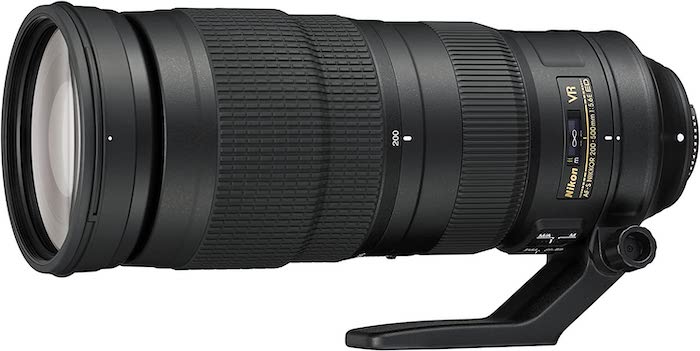
What Is the Best 600mm Lens for Wildlife?
The Nikon Z 600mm f/4 TC VR S is one of the best 600mm lenses for wildlife photography. It features advanced optical technologies.
These include FL and ED glass and a Nano Crystal Coat, which provide excellent sharpness, contrast, and color accuracy.
The lens has a fast, accurate AF system and durable magnesium alloy construction. The VR system also provides up to five stops of stabilization.
But the lens is expensive and heavy. And it requires a tripod or monopod to prevent camera shake.
What Focal Length Is Best for Wildlife?
A focal length of 300mm or greater is generally considered best for wildlife. It provides a long reach and lets photographers capture subjects from a distance without disturbing them.
Focal lengths between 400-600mm are also popular as they offer greater reach. But they can be heavy and expensive.
The ideal focal length also depends on the specific wildlife subject and shooting environment.
Is Canon or Nikon Better for Wildlife Photography?
Both Canon and Nikon offer excellent lenses for wildlife photography. Many offer advanced features such as image stabilization, fast autofocus, and weather-sealed construction.
Choosing between the two brands ultimately comes down to personal preference and familiarity. Both brands have their strengths and weaknesses.
It’s essential to look at individual camera models and lenses to determine which best suits your needs as a wildlife photographer.
What Is the Best Nikon Lens for Animal Portraits?
The Nikon 70-200mm f/2.8E ED VR is an excellent lens for animal portraits. It offers a versatile zoom range and a fast aperture. This allows for beautiful bokeh and selective focus.
It also features advanced optical technologies. These include fluorite and ED glass elements, which provide excellent sharpness and contrast.
Finally, the lens has a fast, accurate autofocus system and durable, weather-sealed construction.
Check out our article discussing art lenses or types of memory cards next!

